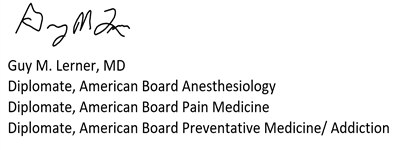Has the Opioid Crisis Changed How We Look at Spinal Cord Stimulation?
April 13, 2020The most common indication for spinal cord stimulation (SCS) in the United States is post-laminectomy syndrome or failed back surgery syndrome (FBSS). These are patients who have had previous spine surgery and have persistent pain postoperatively often leading to disability and reduced quality of life,
Spinal cord stimulation (SCS) is an effective treatment of various chronic pain conditions such as FBSS. Studies have shown this treatment modality to reduce pain, improve function, increase patient satisfaction, improve quality of life, and is also cost-effective in the long term. Features that predict successful spinal cord implantation include daily or continuous pain, higher intensities of pain with predominant radicular pain, more severe pain-related functional disability, a higher prevalence of depressive symptoms, and reduced benefit from pain medication. Most importantly and maybe even unique to SCS, neuromodulation with SCS — unlike surgery and lesioning — is reversible. The implant procedure requires a trial period during which a temporary stimulation system is used to test for therapeutic effect.
In general, patients need to be refractory to other treatments; that is, SCS is generally reserved for patients who have failed conservative management. SCS, although effective, is often considered a therapy of “last resort”. Interestingly, over the past several years, the opioid crisis appears to be changing how clinicians look at this treatment modality.
A 2018 review article entitled “Reframing The Role of Neuromodulation Therapy in the Chronic Pain Treatment Paradigm”, the authors make the case for early use of neuromodulation. “As physicians we must reflect not only on the opioid epidemic, but also the epidemic of chronic pain and disability….The use of the trial period and its reversible nature supports stimulation therapy to be in an earlier tier prior to consideration of other advanced pain therapies, such as surgery, intrathecal therapy, or chronic opioids for non-cancer pain that are not easily reversible.” This review article cited a 2017 article entitled “Association of opioid usage with spinal cord stimulation outcomes” (reference link: Pain Med 2017; 19:699-707). In essence, waiting for treatment failures from conservative measures, such as escalating doses of opioid pain medications, actually led to longer postoperative stays following implantation, higher pain scores post implantation, and a higher risk of system explants.
The bottom line: delaying the use of SCS/ neuromodulation or viewing this modality as a “last resort” may not be a prudent medical decision for patients with chronic intractable pain like that seen in FBSS.
The Specialists in Pain Care Team!


